#jia hui
Explore tagged Tumblr posts
Text







Zhang Qingxiu, Zhang Jie, Gao Ning , Han Liangyu, Zhang Yunling and Jia Hui by Edwin Zhang for Haper's Bazaar Men Magazine January 2024
118 notes
·
View notes
Photo

Mackenna
Gothic lolita cross themed coord
OP - Jia Hui
Bag, Socks - Angelic Pretty
Shoes - Angelic Imprint
Bonnet- CUTC
2 notes
·
View notes
Text








Cdrama: The Unexpected Marriage (2024)
Gifs of Intro of cdrama "The Unexpected Marriage"
ENG SUB 【拂玉鞍 The Unexpected Marriage】 EP01 刘长生遇难被吕敬救下,吕敬巧妙化解刘长生的“刁难”(漆昱辰、吴俊霆)
Watch this video on Youtube: https://www.youtube.com/watch?v=JrKjbUIWkaA

#The Unexpected Marriage#拂玉鞍#The Leftover Warrior Princess#Fu Yu An#Sheng Dou Shi Jun Zhu#剩斗士郡主#剩鬥士郡主#2024#MGTV#Mango TV#Tencent Video#youtube#cdrama#chinese drama#1st episode#first episode#Qi Yu Chen#Wu Jun Ting#Wang Chuan#Gao Hui Lin#Li Xing Yao#Jin Chong#Chake Lau#Yin Yi Bo#Cao Qi#Li Jing Yi#Macy#Ding Nan#Dai Yi#Zou Duo Jia
10 notes
·
View notes
Text
I get that the princess doesn’t like Ruyi and is happy to make trouble for her (and also doesn’t know Yanwan) but Emperor, sir, you were literally there when Yanwan threw her own mother under the bus to save herself. You saw it happen with your own eyes.
How did you already forget???
#ruyi's royal love in the palace#legend of ruyi#it’s one thing for the emperor to constantly forgive Jia Hui or the Empress because they’re all from powerful clans#but Yanwan is a nobody - you’d think she’d be more careful because she’s doesn’t have any protection#but somehow he keeps falling for her tears anyway
2 notes
·
View notes
Text



Lin Jia Hui - SING (3 AVATARS)
By Abaddon
GALERIE (9)
#Lin jia hui#SING#Chinese#chinese group#avatars#avatar#400x640#400*640#640x400#rp#forum rpg#forum#avatars forum#rpg
2 notes
·
View notes
Text
I think I’m just gonna skip to episode 86
#I’m on 66 and out of patience with Yanwan#I knew it was a tragedy going in but damn#What I don’t see with my eyes won’t cause me as much emotional agony#I stuck around patiently to see Ar’ou get her comeuppance. As I did for Jia Hui Xioxian that eunuch whose name I don’t remember ect#I don’t have it in me to spend the next 20 episodes watching Consort Ling do well#Also I really want to see the emperor begging for Ruyi to forgive him#Because boy do I hate that man#Best thing Hui ever did was when she gave him scabies#ruyi's royal love in the palace#At this point in the series I’d be yearning for the cold palace#“The emperor will never acknowledge you again” that’s the dream innit
1 note
·
View note
Text
Bilibili Comics Shutdown
Time to Read: 37 minutes On January 24th, 2024, Bilibili Comics announced the shutdown of the service on February 29, 2024. There’s a lot that can be said about Bilibili Comics and how they have operated in the past 2, 2.5 years, but the conclusion is the same, whether the criticism is positive or negative, so there’s not much point in discussing all the issues and their, at times questionable…
View On WordPress
#Adapted from a novel#Author: An De#Author: Bu Jian Bu Jie#Author: Bu Ke Zhi#Author: CECI#Author: Chang Gan#Author: Chu He#Author: Chun Qing Xi Li Ge#Author: Deranged Melon Skin#Author: Fe Shi#Author: Fei Tian Ye Xiang#Author: Feng He Ju E#Author: Guang Yan#Author: Hai Jingluo#Author: Huai Shang#Author: Hui Nan Que#Author: Jia Feng Sheng Cun#Author: Jin Gang Juan (Golden Circle)#Author: Jingge#Author: Ju Mao Gege#Author: Ka Bi Qiu#Author: Kao Kao#Author: Li Su#Author: Ling Luo Cheng Ni#Author: Lu Ye Qian He#Author: Luo Qisha#Author: Man Man He Qi Duo#Author: Mao Ni (Shenanigans)#Author: Meng Qian Xi#Author: Mo Chen Huan
0 notes
Text
youtube
夜晚靠得住 我们不怕天黑
//
the night is dependable we're not afraid of nightfall
#天地在兜里我是叶一片#tian di zai dou li wo shi ye yi pian#等一下就回家#deng yi xia jiu hui jia#ksovii#chinese#mandopop#cpop#2021#2020s music#Youtube#少年说唱企划#New Generation Hip-Hop Project
1 note
·
View note
Text








#dynasty#warriors#dynasty warriors#koei tecmo#koei#guo jia#zhong hui#jia chong#cao pi#caopi#sima yi#xu shu#lidian
0 notes
Text
Someday or One Day: The Movie

Movies watched in 2023
Someday or One Day: The Movie (2022, Taiwan)
Director: Tien Jen Huang
Writer: Chi Feng Chien
Mini-review:
When this movie was first announced I was both excited and terrified. I wanted to reunite with this incredible characters and story, but I was scared they would ruin the original drama, which is one of my favorite TV shows ever. In the end, the movie was neither amazing nor disastrous. I didn't hate it, but it could have been so much better. On the one hand, I loved seeing more of these characters. In a lot of ways, this story is basically fan service. I loved all the new interactions we got and the writer made some really fun choices when mixing up the characters. The main three actors did an incredible job, just like in the drama. It's fascinating how much detail they put into all the little mannerisms and gestures that differentiate the dual characters. And of course, their chemistry is still unforgettable.
However, there were things I didn't like at all. I'm very nitpicking when it comes to time travel/time loop shows and movies, and the original drama is one of the extremely few stories that have absolutely satisfied me in this regard. The whole thing is just so well thought out and perfectly executed. This movie... wasn't. IMHO, the movie's loops and time travel logic were really confusing and made very little sense. And the ending didn't fully convince me, either. Anyway, the fan service mostly makes up for the movie's very flawed internal logic, and I'm sure most fans of the drama will enjoy it a lot.
#someday or one day#tien jen huang#chi feng chien#alice ko#ko chia yen#greg hsu#greg han#hsu kuang han#patrick shih#shih po yu#berry kuo#zhang jia hui#jin shi jia#movie#drama#time travel#time loop#tragedy#romance#taiwan#taiwanese drama#movies watched in 2023
0 notes
Text

I love Dynasty Warriors I love Dynasty Warriors I love Dynasty Warriors
This is a joke... a very funny joke (to me)... I love Guo Jia so much my favorite character I can't stand him I hate his guts he's my precious meow meow
#Dynasty Warriors 9#Dynasty Warriors Guo Jia#Dynasty Warriors Zhong Hui#fun fact: I lost one of my very first battles in DW9 because enemy Guo Jia wouldn't stop talking to me and I... I'm down bad#Zhong Hui is such a dumbass I love him#the duality of man
1 note
·
View note
Text

Name: Jia Hui
Age: 24
Estimated bra size: 31B
Don’t let that sweet innocent smile fool you! Jia Hui’s body is an absolute stunner. And while she may not have the wildest chest in the world, it sits nicely in the bikini tops she’s chosen to use.

Her cheeky attitude comes across clearly and girls who know how to have fun are always a pleasure in bed (or outside!)
I would do anything to watch her change into her skimpy swimwear that bares so much for us all.





While Jia Hui might not make it into the coveted #30A series for our flat chested sluts, her perky little boobs are still deserving of recognition here on SGBR!
Do you want Jia Hui to become the MOST DESIRED GIRL on SGBR? The cum target with the most REBLOGS gets to attain the coveted title!
Submit your irl sluts and their leaks for review!
340 notes
·
View notes
Text
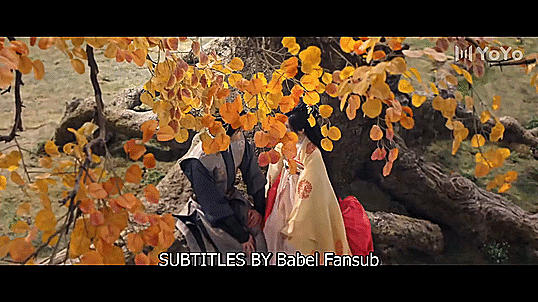



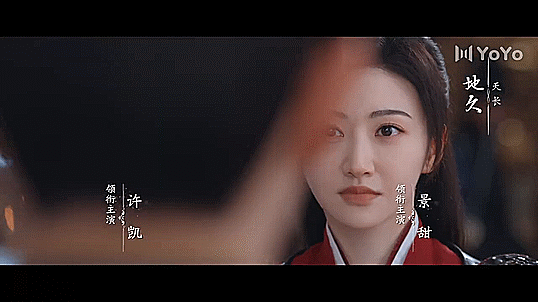
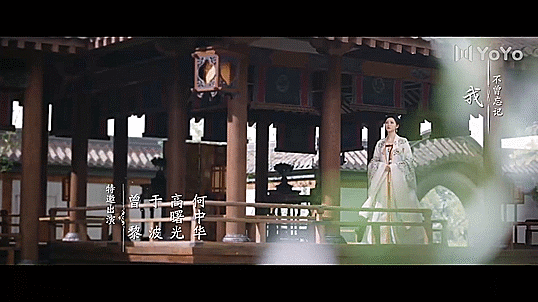
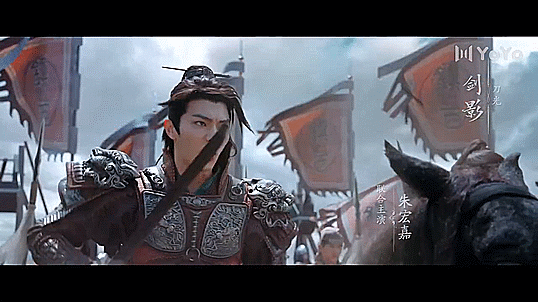


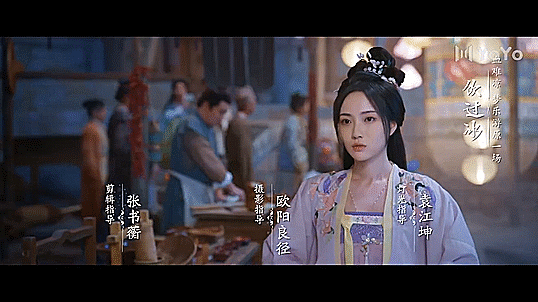
Cdrama: Wonderland Of Love (2023)
Gifs of Intro of cdrama "Wonderland Of Love"
Wonderland of Love 01 | Xu Kai, Jing Tian met underwater for the first time | 乐游原 | ENG SUB
Watch this video on Youtube: https://www.youtube.com/watch?v=ALVaC4Xf_C8


#Wonderland of Love#乐游原#Le You Yuan#Wonderland to Love#樂遊原#2023#youtube#cdrama#chinese drama#episode 1#1st episode#Xu Kai#Jing Tian#Zheng He Hui Zi#Gao Han#Zhao Jia Min#Liu Dong Qin#He Feng Tian#Dai Yi
20 notes
·
View notes
Text
[Hanfu · 漢服]Chinese Warring States period(475–221 BC) Traditional Clothing Hanfu-Life of Qu Yuan(屈原)
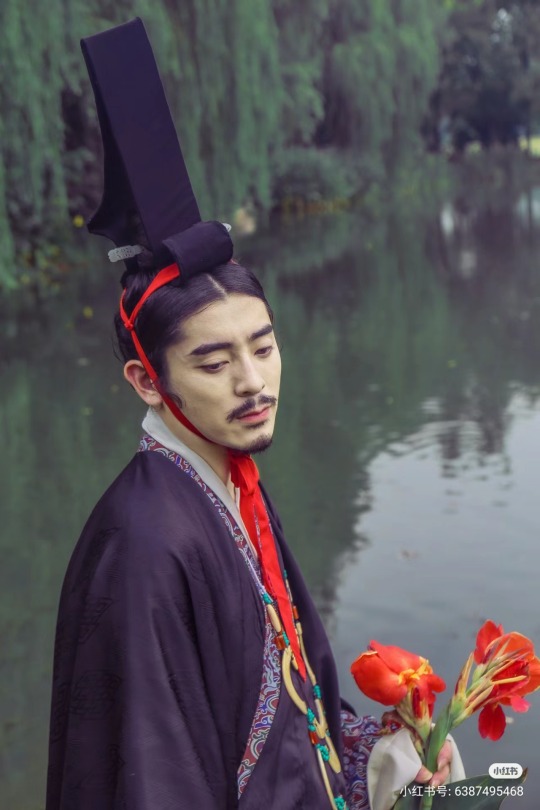
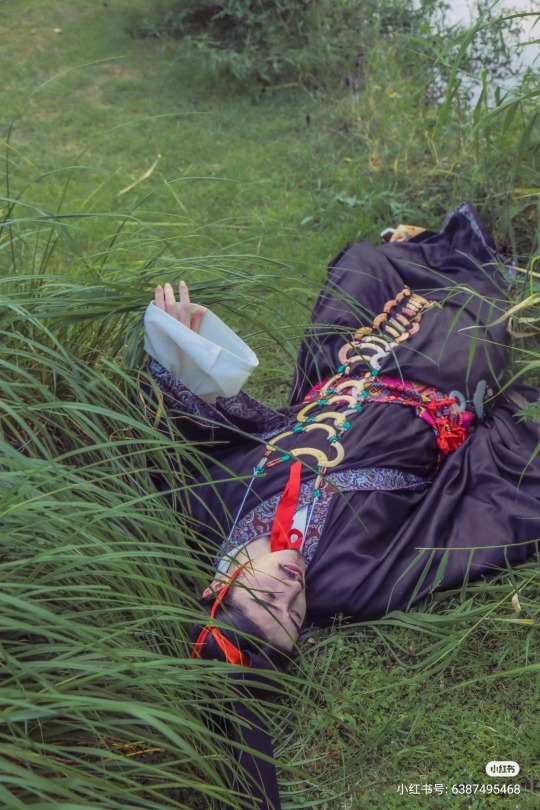
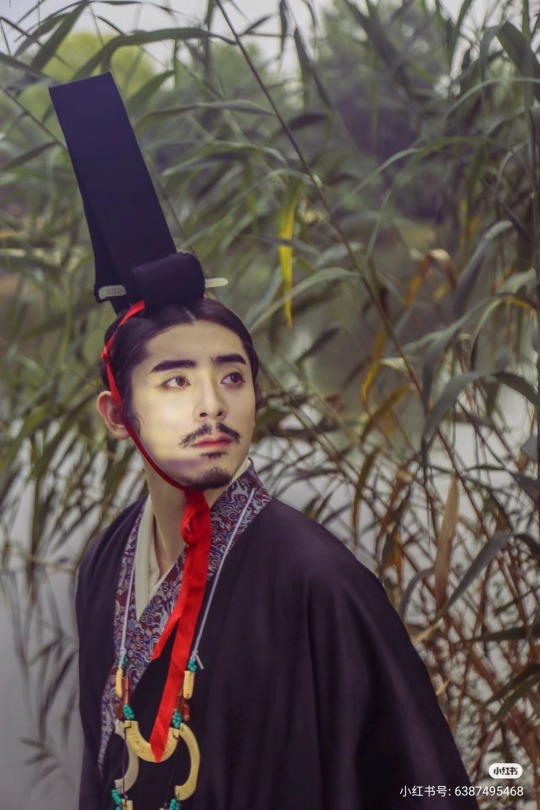

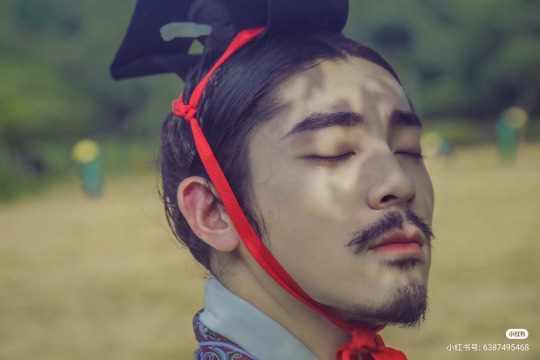

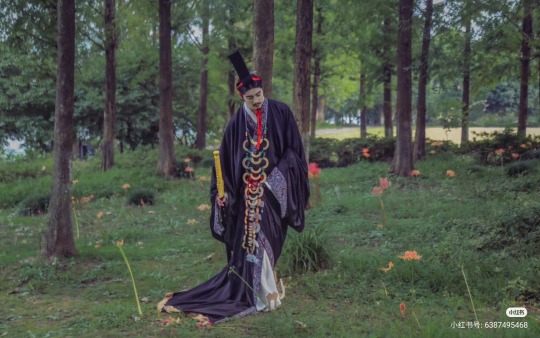
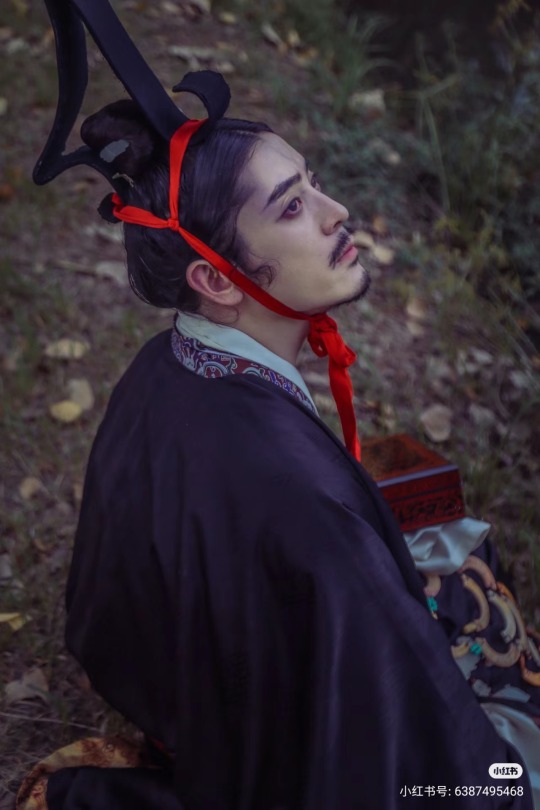
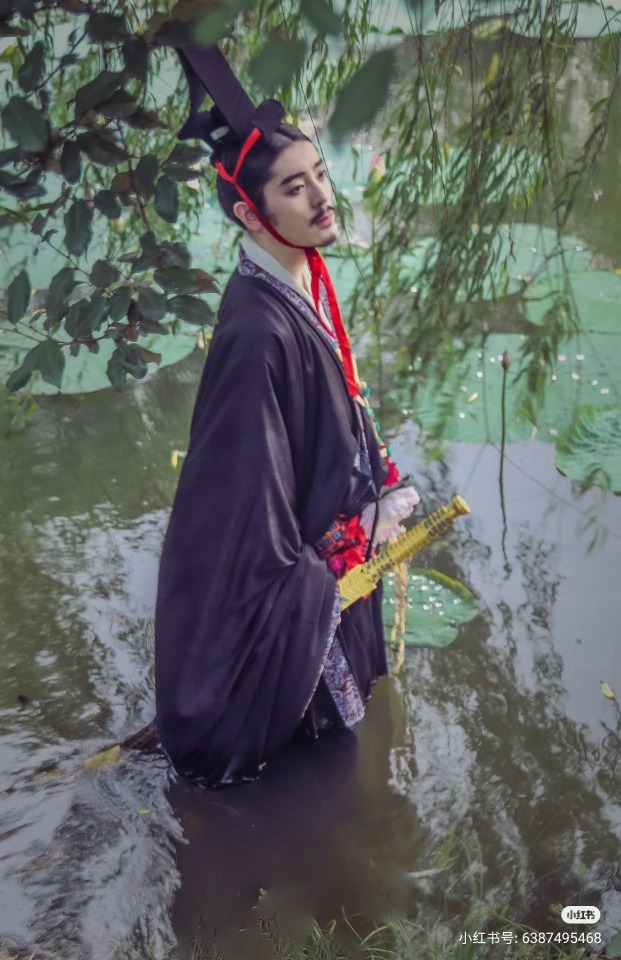
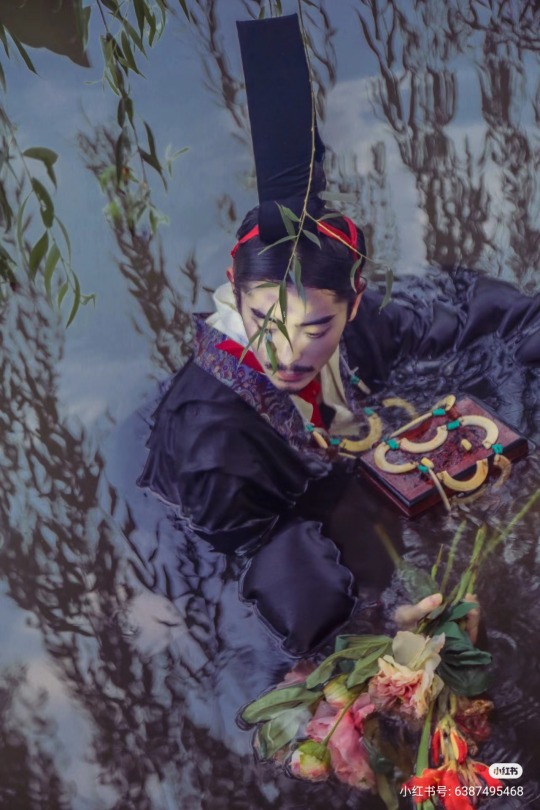
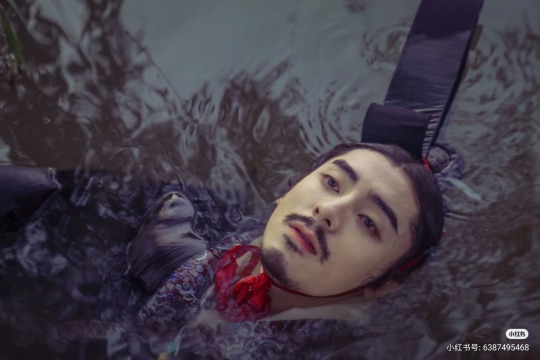

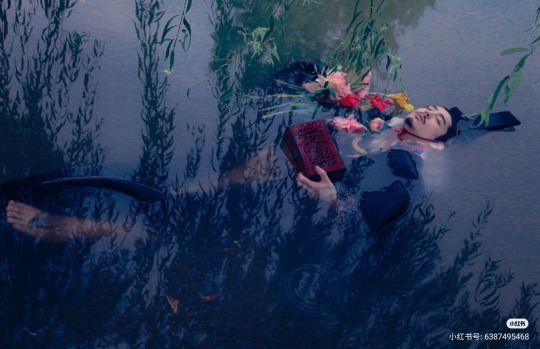
【Historical Artifact Reference】:
China Warring States period (475-221 BC):Silk painting depicting a man riding a dragon (人物御龍帛畫)
it was discovered in the Zidanku Tomb no. 1 in Changsha, Hunan Province in 1973. Now in the Hunan Museum
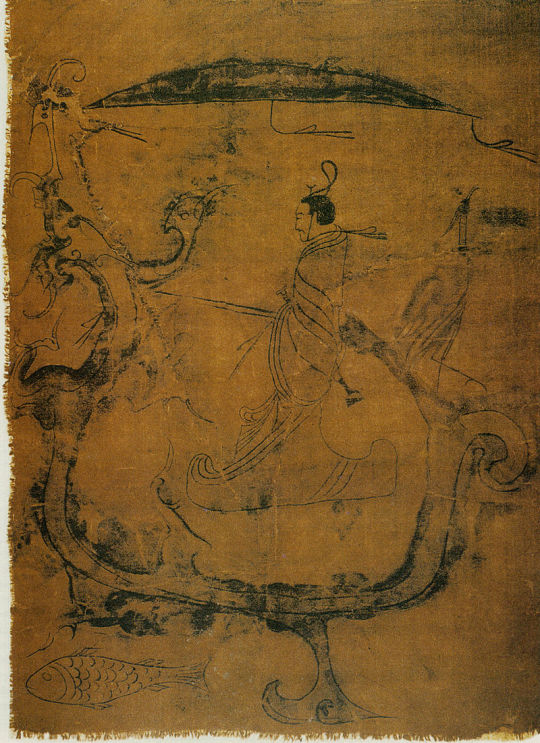
A man with a sword is riding a dragon by holding the rein. The dragon's body was given the shape of a boat. A little egret is standing at the tail of the dragon. A carp under the dragon is leading the way. The umbrella in the top middle of the picture shows the owner's nobility. The work has become associated with the Chu poet Qu Yuan’s famous verse from his poem Shejiang (涉江, Setting foot in the river), ‘Carrying a long sword with weird colour; Wearing a qieyun–styled high cap.” (帶長鋏之陸離兮, 冠切雲之崔嵬)
Western Zhou Dynasty seven-huang jade pendant with linked beads/西周七璜联珠组玉佩

About Qu Yuan(屈原)
Qu Yuan (c. 340 BC – 278 BC)was a Chinese poet and aristocrat in the State of Chu during the Warring States period. He is known for his patriotism and contributions to classical poetry and verses, especially through the poems of the Chu Ci anthology (also known as The Songs of the South or Songs of Chu): a volume of poems attributed to or considered to be inspired by his verse writing. Together with the Shi Jing, the Chu Ci is one of the two greatest collections of ancient Chinese verse. He is also remembered in connection to the supposed origin of the Dragon Boat Festival.
Historical details about Qu Yuan's life are few, and his authorship of many Chu Ci poems has been questioned at length.[4] However, he is widely accepted to have written "The Lament," a Chu Ci poem. The first known reference to Qu Yuan appears in a poem written in 174 BC by Jia Yi, an official from Luoyang who was slandered by jealous officials and banished to Changsha by Emperor Wen of Han. While traveling, he wrote a poem describing the similar fate of a previous "Qu Yuan."Eighty years later, the first known biography of Qu Yuan's life appeared in Han dynasty historian Sima Qian's Records of the Grand Historian, though it contains a number of contradictory details.
Life of Qu Yuan(屈原)
The only surviving source of information on Qu Yuan's life is Sima Qian's biography of him in Records of the Grand Historian (Shiji), although the biography is circumstantial and probably influenced greatly by Sima's own identification with Qu.Sima wrote that Qu was a member of the Chu royal clan and served as an official under King Huai of Chu (reigned 328–299 BC).
During the early days of King Huai's reign, Qu Yuan was serving the State of Chu as its Left Minister. However, King Huai exiled Qu Yuan to the region north of the Han River, because corrupt ministers slandered him and influenced the king.Eventually, Qu Yuan was reinstated and sent on a diplomatic mission to the State of Qi. He tried to resume relations between Chu and Qi, which King Huai had broken under the false pretense of King Hui of Qin to cede territory near Shangyu.
During King Qingxiang's reign, Prime Minister Zilan slandered Qu Yuan.[9] This caused Qu Yuan's exile to the regions south of the Yangtze River. It is said that Qu Yuan returned first to his home town. In his exile, he spent much of this time collecting legends and rearranging folk odes while traveling the countryside. Furthermore, he wrote some of the greatest poetry in Chinese literature and expressed deep concerns about his state. According to legend, his anxiety brought him to an increasingly troubled state of health. During his depression, he would often take walks near a certain well to look upon his thin and gaunt reflection in the water. This well became known as the "Face Reflection Well." On a hillside in Xiangluping (at present-day Zigui County, Hubei Province), there is a well that is considered to be the original well from the time of Qu Yuan.
In 278 BC, learning of the capture of his country's capital, Ying, by General Bai Qi of the state of Qin, Qu Yuan is said to have collected folktales and written the lengthy poem of lamentation called "Lament for Ying". Eventually, he committed suicide by wading into the Miluo River in today's Hunan Province while holding a rock. The reason why he took his life remained controversial and was argued by Chinese scholars for centuries. Typical explanations including martyrdom for his deeply beloved but falling motherland, which was suggested by the philosopher Zhu Xi of the Song dynasty, or feeling extreme despair to the situation of the politics in Chu while his lifelong political dream would never be realized. But according to "Yu Fu," widely considered to be written by Qu himself or at least, a person who was very familiar with Qu, his suicide was an ultimate way to protect his innocence and life principles.[citation needed]
Qu Yuan is said to have expressed his love for the ruling monarch, King Huai of Chu, through several of this works, including "The Lament" and "Longing for Beauty".
Dragon Boat Festival/端午节
Popular legend has it that villagers carried their dumplings and boats to the middle of the river and desperately tried to save Qu Yuan after he immersed himself in the Miluo but were too late to do so. However, in order to keep fish and evil spirits away from his body, they beat drums and splashed the water with their paddles, and they also threw rice into the water both as a food offering to Qu Yuan's spirit and also to distract the fish away from his body. However, the legend continues, that late one night, the spirit of Qu Yuan appeared before his friends and told them that he died because he had taken himself under the river. Then, he asked his friends to wrap their rice into three-cornered silk packages to ward off the dragon.
These packages became a traditional food known as zongzi, although the lumps of rice are now wrapped in leaves instead of silk. The act of racing to search for his body in boats gradually became the cultural tradition of dragon boat racing, held on the anniversary of his death every year. Today, people still eat zongzi and participate in dragon boat races to commemorate Qu Yuan's sacrifice on the fifth day of the fifth month of the traditional lunisolar Chinese calendar.
--------
Recreation Work by : @晴南
Xiaohongshu🔗:http://xhslink.com/CU2x9J
--------
#chinese hanfu#Warring States period(475–221 BC)#Qu Yuan(屈原)#State of Chu#china history#chines history#hanfu#hanfu accessories#hanfu_challenge#chinese traditional clothing#china#chinese#chinese aesthetics#chinese historical fashio#漢服#汉服#中華風#晴南#Dragon Boat Festival/端午节
182 notes
·
View notes
Note
How exactly do consorts and concubines get the "names"? In Legend of Ruyi, we hear names like Xian, Yu, Jia, Shu, etc. Do these names have any specific meaning?
The names like Xian, Jia, Shu etc. are granted titles or fenghao 封号 given to consorts. Usually only those with the ranks of pin and up will have granted titles, because only ranks of pin and up 1) have formal ceremony (册封) to canonise their title and 2) only pin and up would be entitled to wear court attire and attend formal rites and ceremonies.
Of course in dramas you will see concubines lower than the rank of pin have fenghao and it’s either just not explained (Yuyan as Jia Guiren) or passed off in the drama as at the discretion of the emperor (Zhen Huan as Wan Changzai).
Anyway, fenghao are likely chosen by the Ministry of Rites 礼部. The meaning of each fenghao can have pretty broad interpretations because of the way Chinese works, one character’s will have a general meaning but the specific can change depending on when you pair that character with another, but generally characters used as fenghao would all carry auspicious meanings or highlight the virtues of consort.
娴 xian - elegant. I’m reading way too much into this, but in the context of Legend of Ruyi, I wonder if there is also some subtle messaging considering part of the title contains the character 闲 which means idle, leisurely, unoccupied, which is basically the life that Ruyi wishes she has, for every to just leave her the hell alone and she’ll leave them alone, but never could have. Also another person who wishes for this and can’t have it is Fan Xian, whose name is actually is xian 闲.
愉 yú - pleasant, pleased, delighted. Hailan was granted this title when she gave birth to Yongqi and Qianlong explained it was because she had pleased him by having a son. Not to be confused with 豫 yù which is Eyinzhu’s title which also means happy.
慧 hui - intelligent. The Empress Dowager had a whole spiel about how this title for Xiyue is ironic because she really is…not. Which could just be Qianlong going I wish she would be more intelligent.
令 ling - The Chinese Wikipedia says that this title derives from the Manchurian word mergen which means intelligent and wise, so clearly Qing dynasty fenghao also take into consideration the Manchurian equivalent/meanings of the words.
嘉 jia - blessing/praise; 純 chun - pure; 舒 shu - comfortable, leisurely
An aside re fenghao in Legend of Zhen Huan
It’s always so funny to me that when An Lingrong was made a consort, the officials initially prepared as one of the choices for her fenghao the character 丽 (meaning beautiful) and Yongzheng vetoed it because it the character 丽 is part of some saying that extols the harmony between husband and wife, and Lingrong can’t bear this title because she’s not his wife, and this is the reason Zhen Huan suggested modifying the title to 鹂, a type of bird, probably knowing that Lingrong would hate it.
And I’m just…
WHO THE HELL IS THIS THEN??

Of course, the whole thing with Lingrong’s title is also just to highlight how precarious Lingrong’s situation then is and her promotion was a pity promotion because she was pregnant and she’s not actually that in favour.
Anyway, other concubines of lower ranks would be called by title of address 称号 chenghao, which are usually a character from their surname, their father’s name or their own name. Hai Guiren comes from Hailan’s name, An Lingrong was called An Daying/Changzai/Guiren/Pin for a long time from her surname.
#ask#qing dynasty#honorifics#legend of ruyi#ruyi's royal love in the palace#legend of zhen huan#reference
95 notes
·
View notes
Text

Archaeologists Discover Mysterious Jade Dragon Artifact at a 5,000-Year-Old Tomb in China
Hundreds of artifacts have been unearthed at a burial mound in the city of Chifeng, but researchers are particularly intrigued by the six-inch-long object.
Archaeologists have discovered a 5,000-year-old jade dragon artifact while excavating a burial mound in northeastern China.
The object measures roughly six inches long, four inches wide and one inch thick—making it the “largest jade dragon ever discovered from the Hongshan culture,” according to the official state news agency Xinhua.
The dig site is located in the city of Chifeng in Inner Mongolia, an autonomous region in China. The burial mound—which includes a circular tomb situated north of a square altar—is between 5,000 and 5,100 years old.
It was built by the Hongshan culture, a large Neolithic group known for its delicately carved objects that prospered in the region. Experts think that Hongshan craftsmen made some of the earliest known jade artifacts in history.
In April, researchers began a four-month excavation at the site, as Archaeology News’ Dario Radley reports. They have since uncovered human remains, fire pits, an assortment of pottery and more than 100 jade objects.

The scientists were particularly intrigued by the jade dragon, which they say is noteworthy for its size. However, not all researchers are impressed with the newly discovered artifact.
While the jade dragon is “very nice,” it’s also “not that unique,” Gideon Shelach-Lavi, a scholar of East Asian studies at the Hebrew University of Jerusalem, tells Live Science’s Owen Jarus.
Shelach-Lavi, who has excavated in the area but was not involved in the recent dig, says that similar jade dragon artifacts have been unearthed at other tombs from the Hongshan culture. What’s more, historians can’t say for sure that they were crafted to resemble dragons.
“We do not really know what their meaning was during the Neolithic period, so calling them ‘dragons’ is anachronistic,” he adds.
Still, officials say that the objects are shedding new light on the history of Neolithic groups in the region.


“This is the largest stone burial mound from the late Hongshan culture ever found in Inner Mongolia,” said Sun Jinsong, the director of the Inner Mongolia Institute of Cultural Relics and Archaeology, at a press conference, per Archaeology News. “The variety of jade artifacts discovered fills important gaps in our understanding of this ancient civilization’s jade usage.”
Research at the site, which includes radiocarbon dating and topographic mapping, is still ongoing.
A ritual complex with a similar layout was previously discovered at a site called Niuheliang, located about 90 miles from Chifeng, as Jia Xiaobing, a researcher at the Chinese Academy of Social Sciences’ Institute of Archaeology, tells China Daily’s Fang Aiqing and Yuan Hui.
“Such consistency in an expanded area proves that a shared belief system existed among the Hongshan ancestors,” he says.
By Julia Binswanger.

#Archaeologists Discover Mysterious Jade Dragon Artifact at a 5000-Year-Old Tomb in China#Chifeng#Mongolia#Jade#ancient grave#ancient tomb#ancient artifacts#archeology#archeolgst#history#history news#ancient history#ancient culture#ancient civilizations#Hongshan culture#ancient art#art history
34 notes
·
View notes